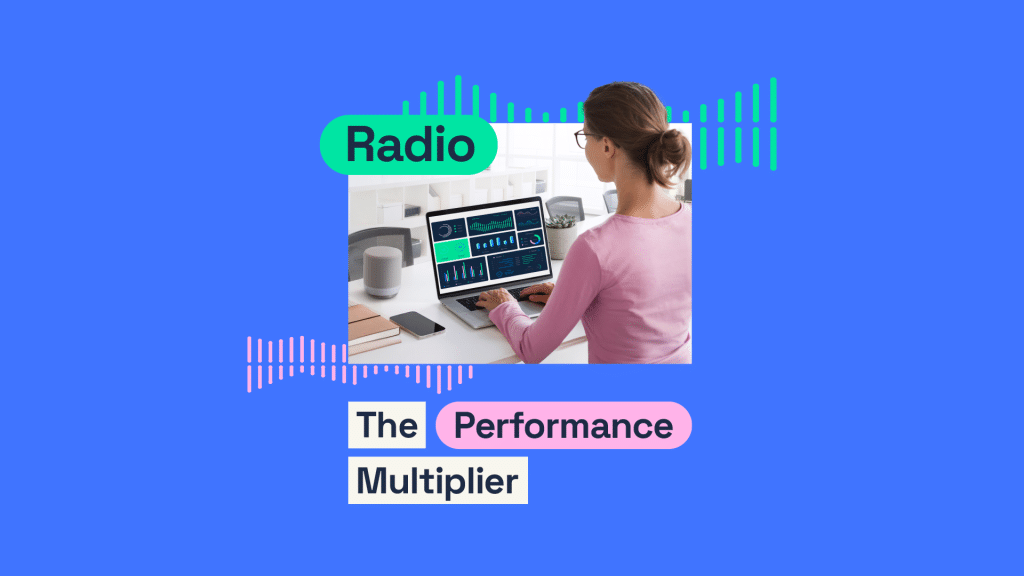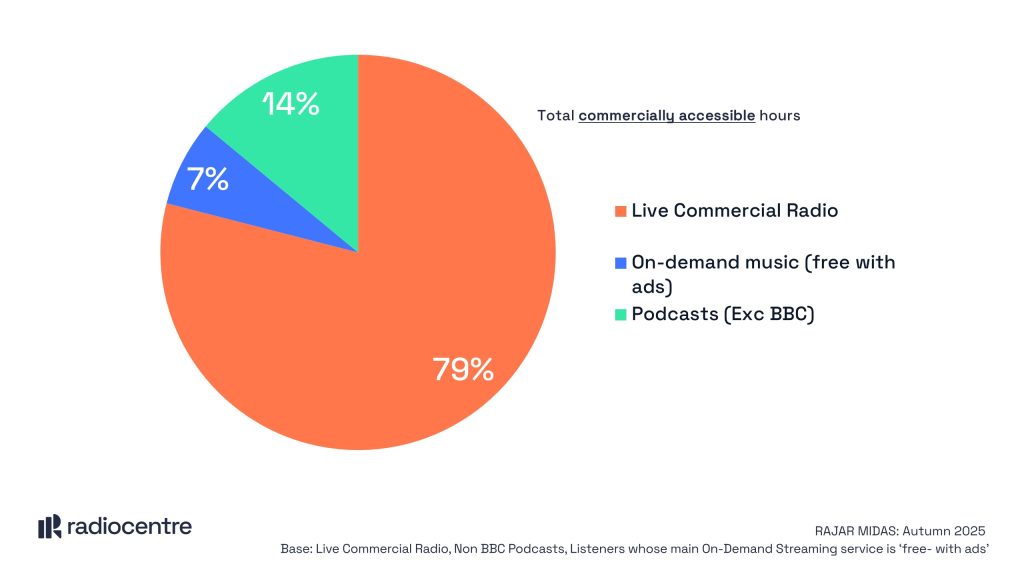
Learn how your radio campaign is really performing

Following the successful launch of Radio: The Performance Multiplier, Radiocentre has allocated budget to fund analysis of up to eight additional radio campaigns using the same regression modelling techniques. Our aim is to help a broader set of advertisers understand more accurately how radio is driving traffic to their website, while expanding our central dataset for future meta-analysis.
About Radio: The Performance Multiplier
In a world first, the latest research study from Radiocentre, conducted in partnership with Colourtext, used regression modelling/machine learning to analyse two massive, passive datasets (the outputs and outcomes from a range of actual, in-market, Performance-led, multi-media campaigns) to reveal the true impact of radio advertising for Performance marketers. A report outlining the key findings from the study is available to read here.
The following information details all you need to know if you’re working on a campaign that you’d like to be considered for analysis.
A. CAMPAIGN QUALIFICATION CRITERIA
• The campaign must have run at any time in 2024
• National radio activity running for a minimum of 4 weeks.
• Campaign weight = MEDIUM/HEAVY, i.e. ideally no lower than the mid-point on the relevant curves featured in Radiocentre’s Radio Planning Optimiser tool.
• A clean radio-fallow period, pre- and post- the radio activity (ideally one month; although two weeks may be acceptable, subject to the structure of the wider media plan).
• Radio ad creative execution that single-mindedly seeks to drive people to the advertised brand’s website and features a clear web-based call-to-action.
B. OUTPUTS PROVIDED BY RADIOCENTRE
1. Radio spot advertising web response time-lag analysis.
2. Baseline benchmark of web sessions assuming no media activity had occurred
3. Total media-driven uplift in web sessions vs. baseline
4. Proportion of uplift in web sessions attributable to radio vs. other media combined
5. Radio cost-efficiency in uplifting web sessions vs. other media combined, benchmarked against overall study averages
6. Total media-driven uplift in web sessions over baseline broken down by referral source
7. The impact of increasing radio’s budget share on overall web sessions/by major referral source, where appropriate.
C. DATA INPUT REQUIREMENTS FROM PARTICIPATING ADVERTISERS/AGENCIES
1. Details of all media activity running during the Radio campaign period and four weeks pre/post activity (radio-fallow period), inc. ad format, activity dates and total/weekly all adult reach.
2. Spend by week across each media channel, during the radio campaign period and the four weeks pre/post activity (radio-fallow period)
3. Daily impressions across each media channel during the radio campaign period and four weeks pre/post activity (radio-fallow period)
4. Daily web sessions by referral source (GA data) during the radio campaign period and four weeks pre/post activity (radio-fallow period)
5. Radio minute by minute spot data for a mutually agreed 7-day period within the radio campaign.
6. GA data minute-by-minute total web sessions for the same 7-day period within the radio campaign.
[A DETAILED DATA SUPPLY TEMPLATE WILL BE PROVIDED ON REQUEST]
D. TIMELINES
• Agency/advertiser to provide data as detailed above within four weeks of the campaign finishing/being accepted for analysis (whichever is sooner).
• Radiocentre/Colourtext to provide a presentation of the key findings within 6-8 weeks of receipt of the full dataset requested.
E. HOW TO APPLY (and for further information)
Contact: Donna Burns, Head of Insight (E: donna.burns@radiocentre.org; Tel: 02070100689)



